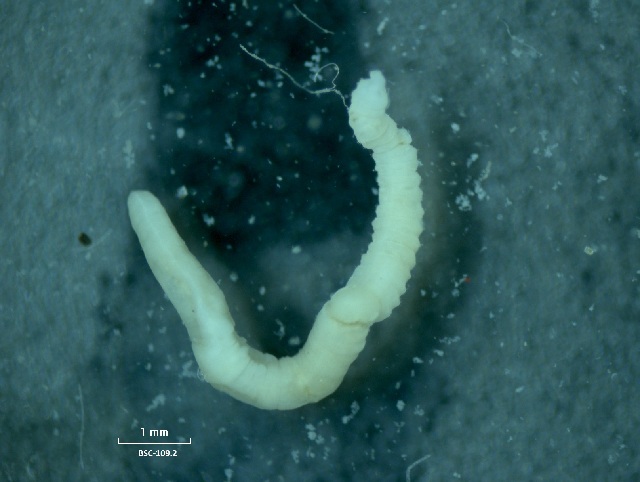
Potamothrix bavaricus
Annelids-Oligochaetes
The oligochaete Potamothrix bavaricus is a small (8-14 mm, 50-62 segments) fresh and brackish water worm. It may be of Ponto-Caspian origin, but it is established in Europe and the Great Lakes, with scattered western North America, Australia, South America, and New Zealand. It was found in the San Francisco Bay Delta, before 1965. Like other oligochaetes, they lack parapodia and have relatively short setae. They are hermaphroditic, with a few anterior segments modified to form a reproductive section, called the clitellum. At sexual maturity, they have a few modified segments forming a reproductive section, called a clitellum. The worms copulate and lay fertilized eggs in cocoons. Freshwater oligochaetes usually occur in silty or muddy sediments and are deposit feeders. Possible vectors include ballast water, solid ballast, aquatic plants, or stocked fishes.
The photo is of Potamothrix moldaviensis.